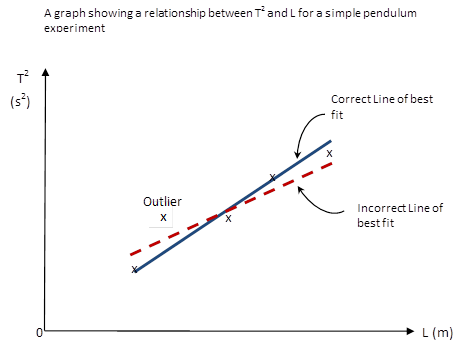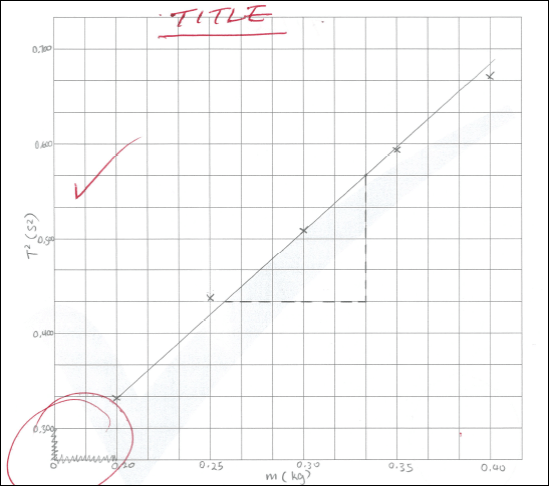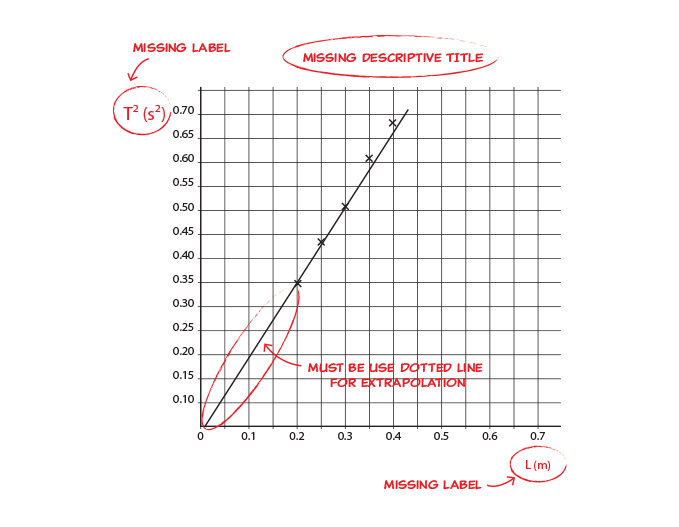How to draw scientific graphs correctly in physics
Table of Contents
Table of Contents
Are you struggling to draw a scientific graph? Don’t worry, you’re not alone. Many people find this task difficult, but it’s an essential skill when it comes to presenting data in a clear and concise manner. In this post, we’ll provide you with tips and tricks to help you draw a scientific graph like a pro.
When it comes to drawing a scientific graph, there are a few pain points that people often encounter. For example, it can be challenging to decide which type of graph to use based on the data you have collected, or to ensure that your axes and labels are accurate and clear. Additionally, some people find it challenging to draw a line of best fit or to choose the correct color scheme for their graph.
The target of drawing a scientific graph is to represent your data in a visual way that captures its trends and patterns. By doing this, you can more easily identify and explain any key findings or relationships within the data. To do this, you’ll need to choose the appropriate graph type for your data, select appropriate labels and axis scales, add a title, and make sure your graph is easy to understand at a glance.
In summary, the main points to keep in mind when drawing a scientific graph are selecting the appropriate graph type, choosing labels and axis scales accurately, adding a title, making sure your graph is easy to understand, ensuring the data is presented accurately and clearly, and to choose the right color scheme. By following these steps, you can create a compelling and informative scientific graph.
How to Draw a Line Graph
When creating a line graph, start by labeling your x and y-axis with the variable you are measuring. Be sure to include units of measurement if applicable. Next, plot the values of the first variable on the x-axis, and the values of the second variable on the y-axis. Connect the dots with a straight line to show a trend. Most importantly, make sure the line is easy to read, and all symbols, such as dots or squares, on the line are distinguishable.
 How to Draw a Bar Graph
How to Draw a Bar Graph
A bar graph is used to represent categorical data, such as the number of students in a class. The first step is to decide the categories and the units of measurement that will be used. Each category is represented by a bar, whose length corresponds to the value of the data plotted against that category. Always label the categories on the x-axis, and the units of measurement on the y-axis.
 ### How to Draw a Line of Best Fit
### How to Draw a Line of Best Fit
The line of best fit is a straight line that best represents all the data on a graph. It helps find the relationship between the two variables under investigation. The first step to draw a line of best fit is to plot your data points on the graph. Then, estimate the slope and the y-intercept of the line, and draw the line using these values. Always make sure the line is close to as many points as possible, with roughly the same number of points above and below the line.
How to Choose the Right Color Scheme
When it comes to selecting the right color scheme, it’s essential to choose a color that is easy to read and that represents your data effectively. For example, if you are presenting data about different countries, use colors that are associated with that country’s flag. Additionally, be sure to choose colors that are easy to distinguish from one another, such as complementary colors.
Personal Experience
When I first started drawing scientific graphs, I found it challenging to decide which type of graph to use. However, after some research and practice, I discovered that the key was to choose the graph that best represented my data visually. This helped me to identify patterns and relationships more quickly and accurately, and communicate those findings to others more effectively.
Question and Answer
Q1: Can I use a line graph to represent categorical data?
A: No, line graphs are best used for continuous data. Categorical data should be represented using a bar graph.
Q2: How do I add error bars to my graph?
A: The first step is to calculate the standard deviation or standard error of the data. Then, add the error bars to the graph by drawing lines from the top of each bar to the top of the error bar, and from the bottom of the bar to the bottom of the error bar.
Q3: Is it necessary to include a title for my graph?
A: Yes, a title helps to clearly communicate what your graph is showing and the key takeaways from the data, making it easier to understand at a glance.
Q4: How do I label my x and y-axis?
A: Be sure to include the variable that you are measuring on the x and y-axis and the units of measurement if applicable. Always use a clear and legible font.
Conclusion of how to draw a scientific graph
Drawing a scientific graph may seem challenging, but with the right knowledge and tools, it’s a skill that anyone can learn. Remember to choose the appropriate graph type, select appropriate labels and axis scales, add a title, and make your graph easy to understand. Additionally, be sure to keep your color scheme easy to read and choose the line of best fit to represent all data. Following these steps will help you create informative and visually compelling scientific graphs.
Gallery
How To Draw Scientific Graphs Correctly In Physics - Matrix Education

Photo Credit by: bing.com / graph physics graphs correctly practical pendulum
How To Draw A Scientific Graph - A Step-by-Step Guide

Photo Credit by: bing.com / graph draw scientific data mistakes correctly broken graphs plotted example look step poor bar work person dot gif source guide
How To Draw Scientific Graphs Correctly In Physics - Matrix Education

Photo Credit by: bing.com / physics correctly matrix inappropriate
How To Draw Scientific Graphs Correctly In Physics | Prime Education

Photo Credit by: bing.com / scientific draw physics graphs correctly
How To Draw A Line Of Best Fit In Physics | Practical Skills Guide Part 4

Photo Credit by: bing.com / graph fit physics draw line scientific mistakes drawing matrix practical part lines common include





